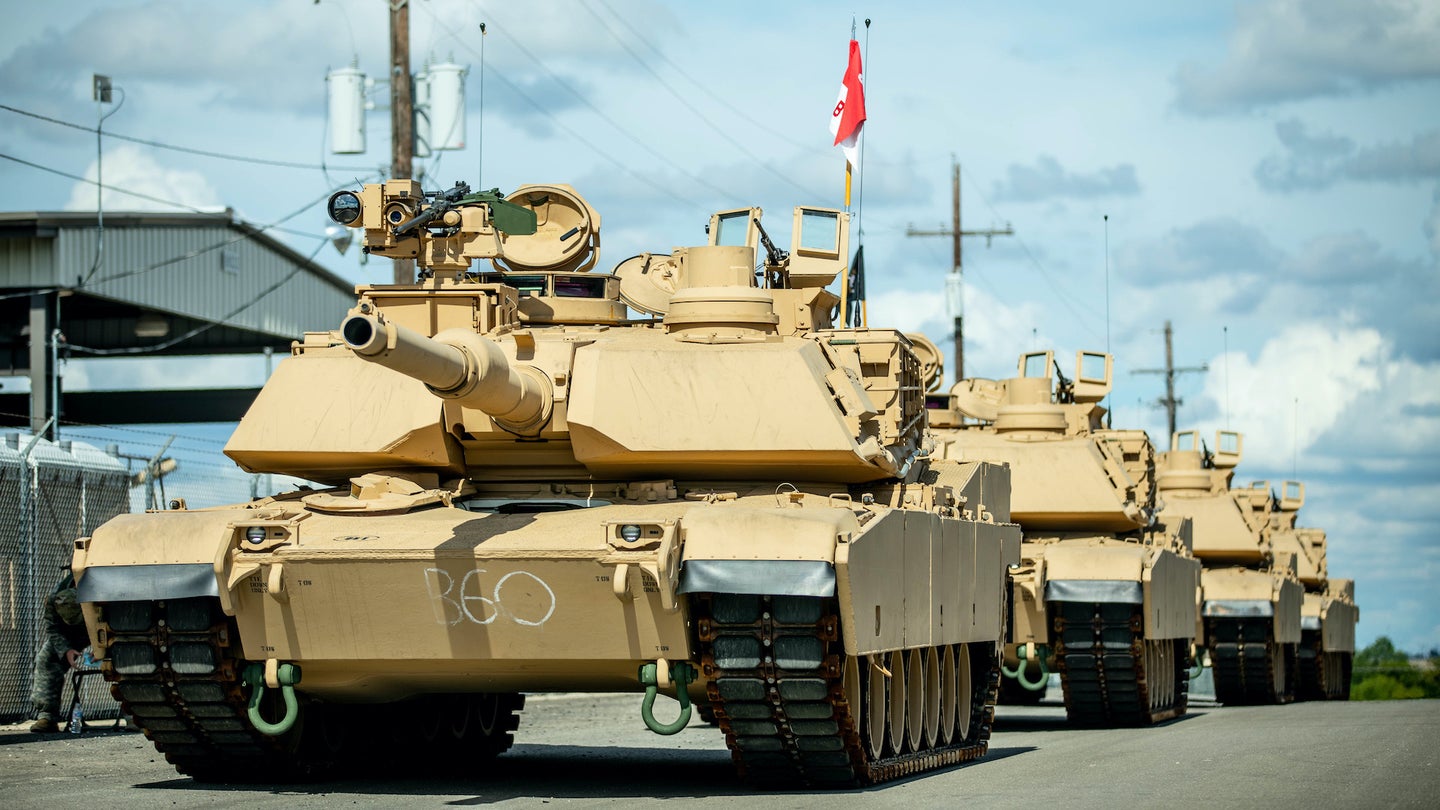The Army is going all-in on its souped-up new M1 Abrams tank
Here comes the M1A2C.

It’s been more than three years since the Army first took delivery of the first of its souped-up new version of the M1 Abrams main battle tank, and the service clearly likes what it sees.
The Defense Department announced on Friday that the Army has awarded a monster $4.62 billion contract to defense giant General Dynamics Land Systems to produce M1A2 SEPv3 tanks for the service over the next eight years.
The announcement did not specify exactly how many fresh Abrams tanks the service plans on procuring under the contract, although it does stipulate that work locations and funding “will be determined with each order, with an estimated completion date of June 17, 2028.”
Also known as the M1A2C, the new Abrams variant “rectifies many of the space, weight and power issues identified during Operation Iraqi Freedom and will be the foundational variant for all future incremental upgrades,” according to the Army.
Outfitted with fresh survivability enhancements and a new power system, the SEPv3 purportedly boasts improved main gun accuracy with “smart cannon” munitions programmable over data link and reinforced armor bolstered by a built-in jammer to counter radio-triggered improvised explosive devices.
As of February 2019, the SEPv3 upgrade also included the Israeli-developed Trophy HV hard-kill active protection systems that use radar to detect incoming missiles and rockets then fires tiny projectiles to intercept them.
According to the Army, the M1A2 SEPv3’s full improvements include the integration of the U.S. military’s Joint Tactical Radio System, highly improved power generation and distribution, a line replaceable modules design for improved maintenance, electronic warfare devices to counter remote-controlled IEDs, and auxiliary power unit, and significant ballistic armor upgrades.
“It is the most reliable Abrams tank ever produced, will decrease the Army’s logistic burden, and leads the Army in enterprise-level connectivity to maintenance and supply systems,” according to the service.
Soldiers from the 3rd Battalion, 8th Cavalry, 3rd Armored Brigade Combat Team, 1st Cavalry Division were the first to take possession of the SEPv3 back in May of this year.
The Army hopes to eventually field up to 2,101 SEPv3 tanks under its Abrams Upgrade Program, according to service budget documents published earlier this year.

The service accepted the first of about a half-dozen initial production versions of the M1A2 SEPv3 Abrams back in October 2017.
The following year, GDLS secured an Army contract to upgrade 274 Abrams tanks — more than three brigades worth — into the new SEPv3 configuration.
According to Army budget documents, the service had previously shelled out more than $13.3 billion for upwards of 1,700 SEPv3 upgrade packages since the start of the program back in 2015.
“The Abrams M1A2 SEPv3 is the first in a series of new or significantly improved vehicles that we will be delivering to the Army’s ABCTs,” Maj. Gen. David Bassett, program executive officer for Ground Combat Systems, said when the first prototypes rolled off the assembly line back in 2017.
“It is a great step forward in reliability, sustainability, protection, and onboard power which positions the Abrams tank and our ABCTs for the future.”
The Army is already eyeing SEPv4 (or M1A2D) upgrades for testing, including “new laser rangefinder technology, color cameras, integrated on-board networks, new slip-rings, advanced meteorological sensors, ammunition data links, laser warning receivers and a far more lethal, multi-purpose 120mm tank round,” as Bassett told Warrior Maven back in 2016.
“This program began early enough to on-board any technology the Army deems critical to the future battlefield to include artificial intelligence, autonomy, APS or advanced sensors,” according to the service.
Related: The evolution of the Army tank — and how it came to dominate the battlefield for more than 100 years
